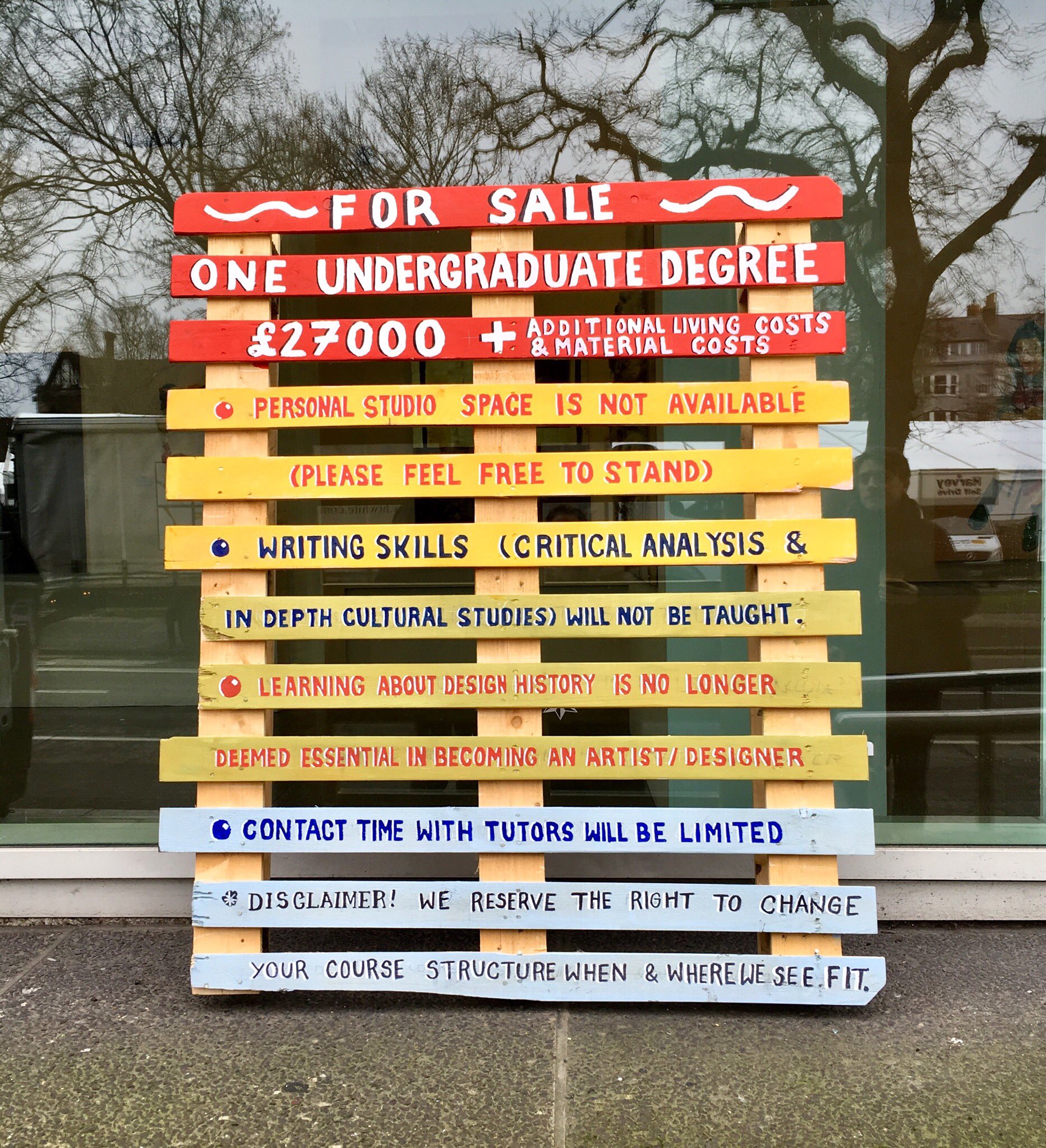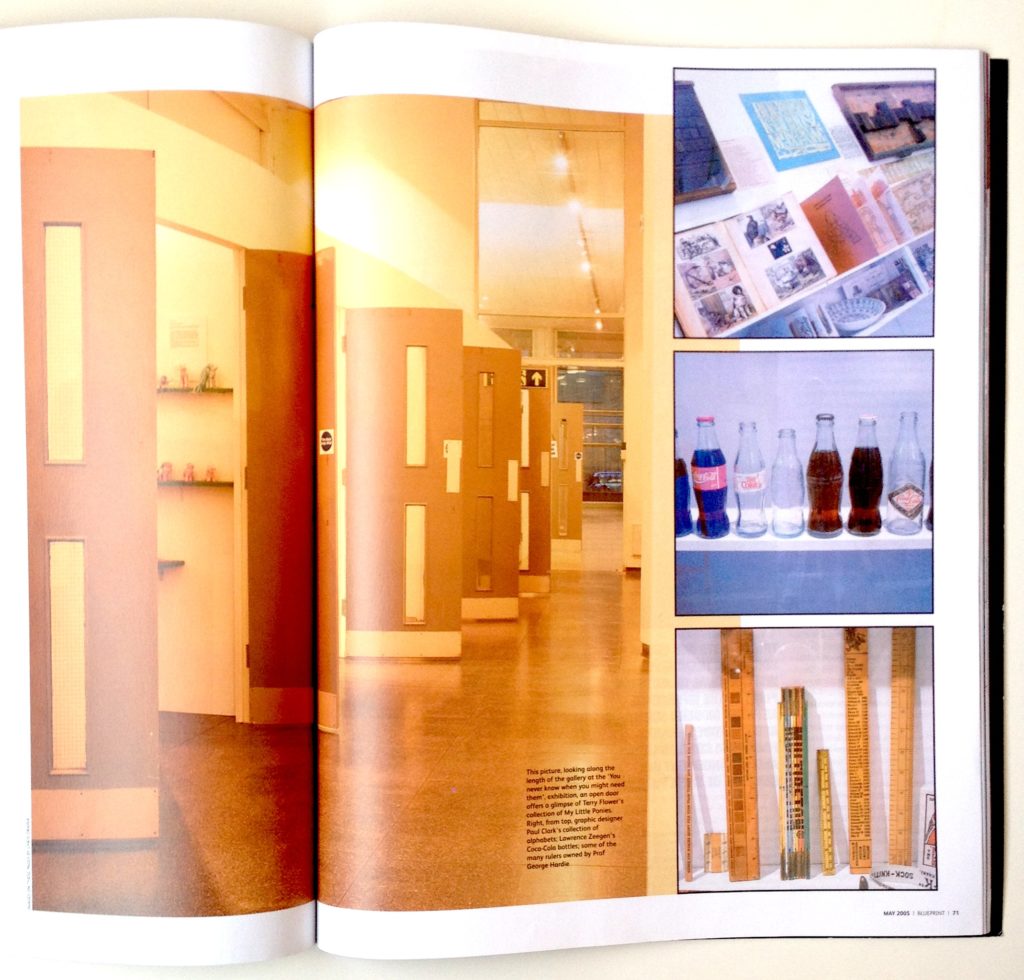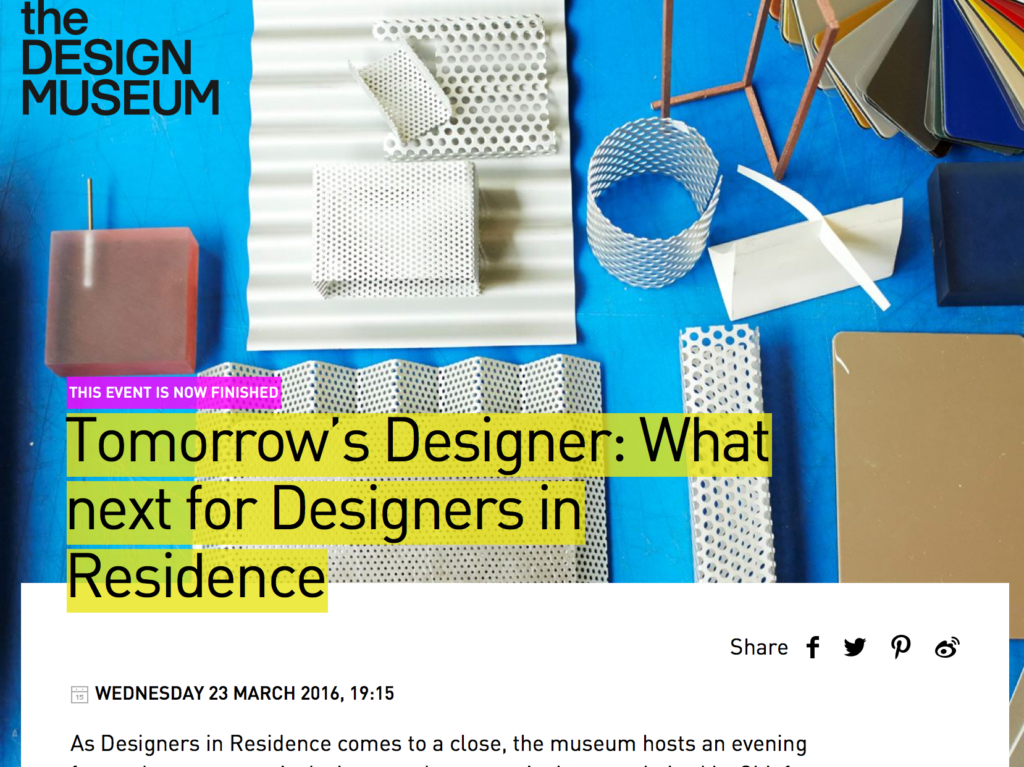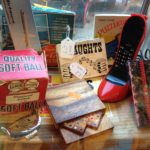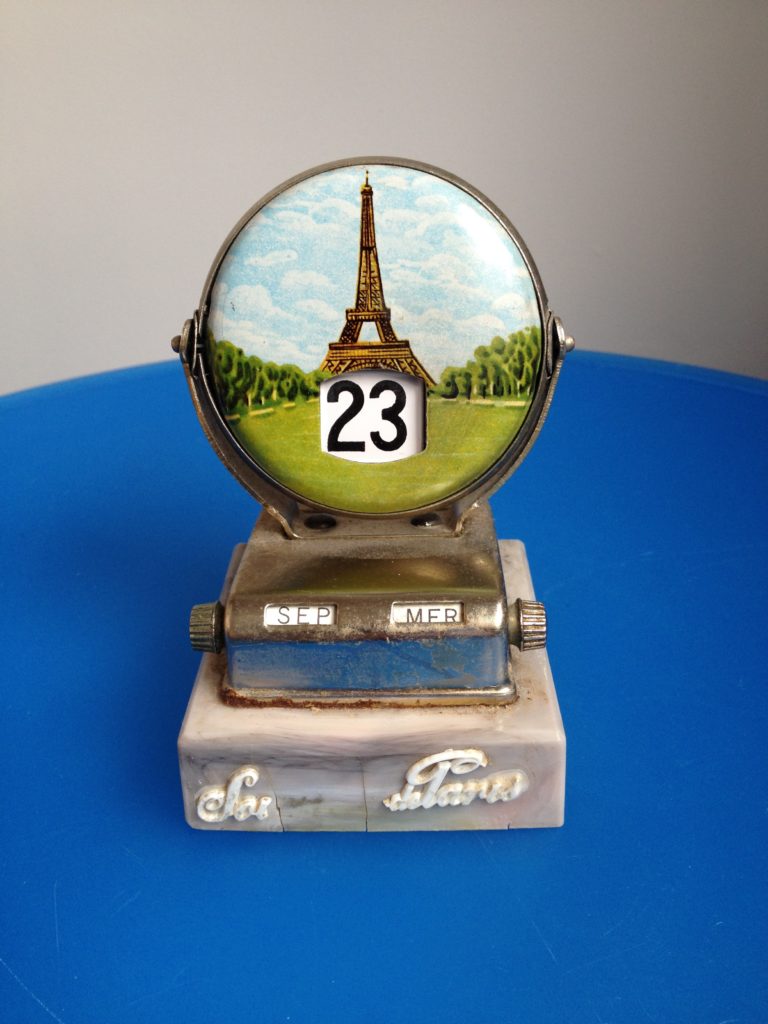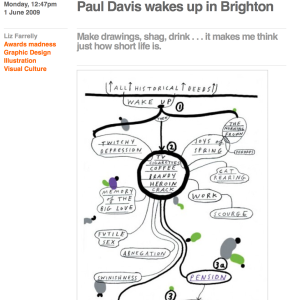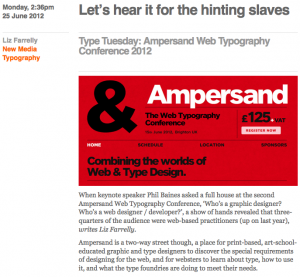I teach Cultural and Critical Studies to Graphic Design and Illustration students at the University of Brighton and was suitably delighted when, on my way to give a lecture, I spotted this piece of ‘pallet protest art’. An Illustration student, Mhairi Lockett, created this message, so I invited her to tell us more in a guest blog.
Why did the University of Brighton lock up a student’s protest art?
by Mhairi Lockett
It is soon to be the May Festival here in Brighton and the Guest Director this year is Illustrator, David Shrigley. One of the themes of the Festival is protest art, this is timely as 2018 marks the 50th year since the student protests in Paris. As a third year student of Illustration at the University of Brighton, I have been moved to make my own protest art — pallet protest art.
Continue reading

